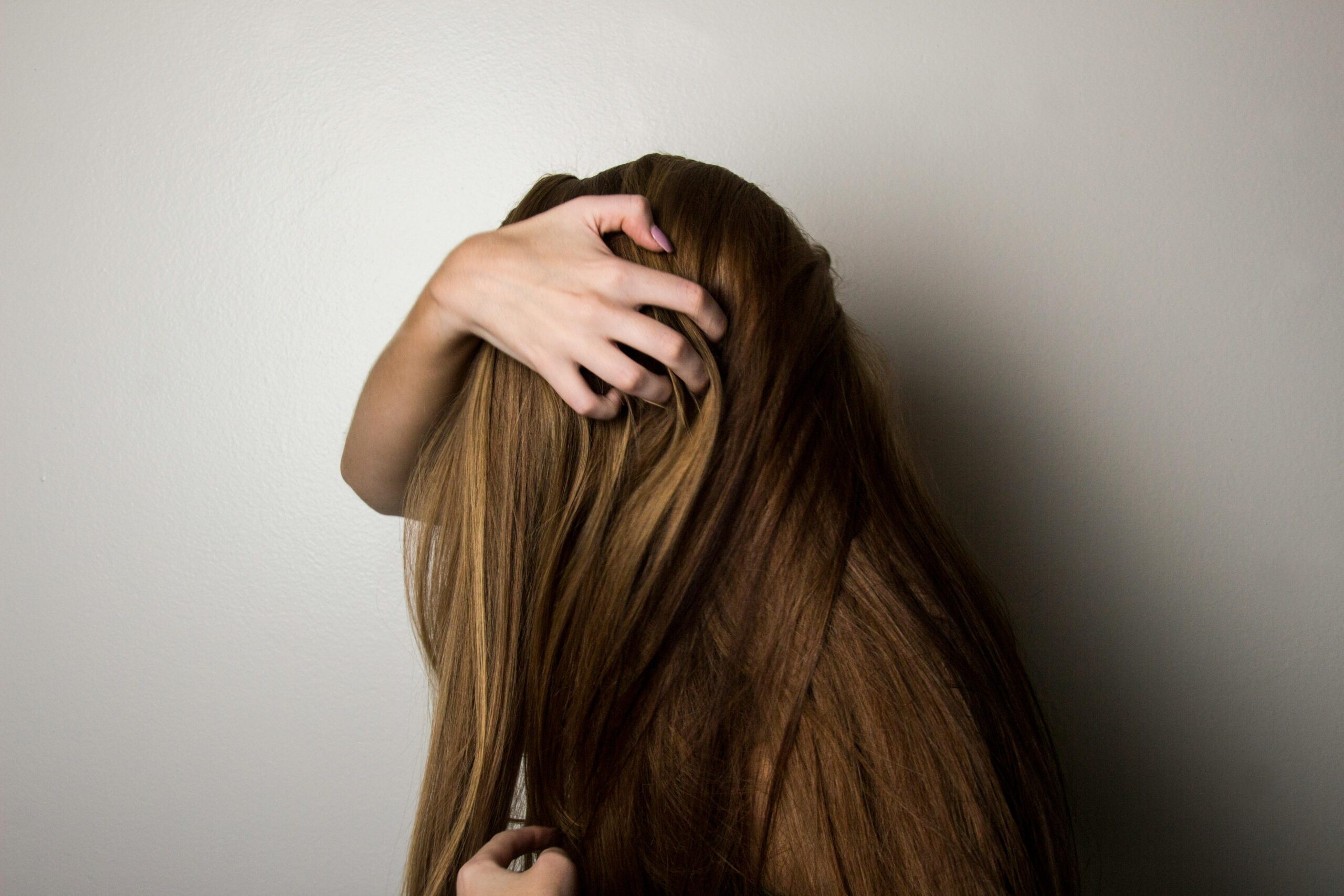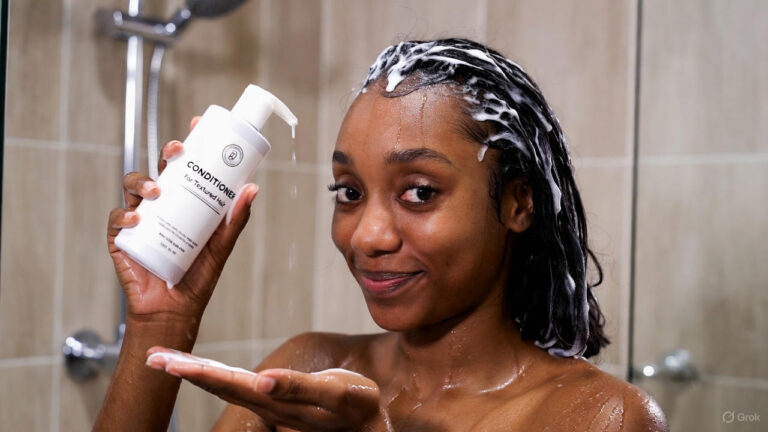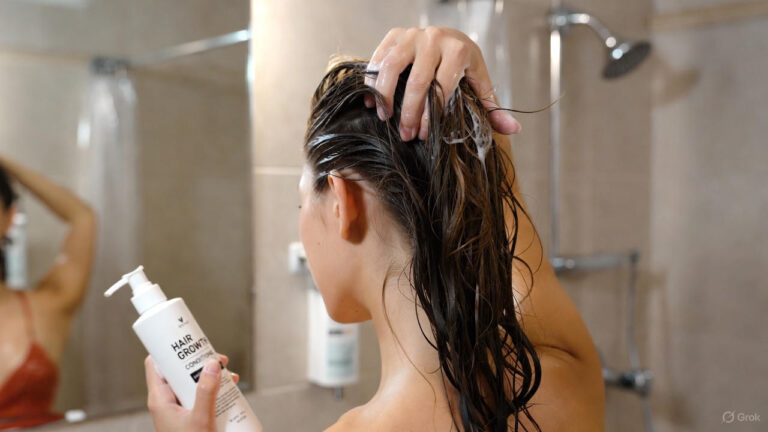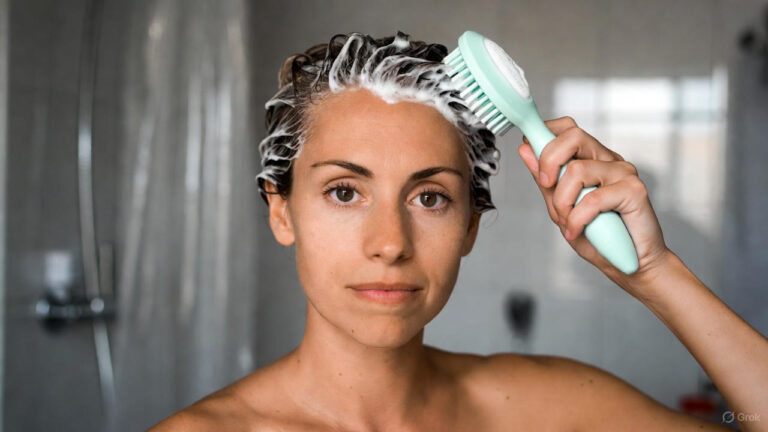Dealing with thinning hair can be frustrating, but the right hair care routine can make a big difference. Thinning hair often needs extra care, but with a few simple adjustments to your daily routine, you can help improve its strength, volume, and overall health. This guide will show you practical steps to create an effective hair care routine designed specifically for thinning hair.
1. Choose the Right Shampoo and Conditioner
The foundation of any hair care routine is a good shampoo and conditioner. For thinning hair, look for products specifically designed to promote hair growth and add volume. Avoid heavy, sulfate-laden shampoos that can weigh down your hair or cause further damage.
What to Look for in a Shampoo:
- Ingredients like biotin, keratin, or caffeine to strengthen the hair shaft and stimulate the scalp.
- Volumizing formulas that give your hair a fuller appearance without making it greasy.
- Avoid sulfates and parabens, which can strip natural oils from your hair.
Conditioner Tips:
- Opt for lightweight conditioners that hydrate without leaving a residue.
- Focus on applying conditioner to the ends of your hair, avoiding the scalp to prevent buildup.
2. Incorporate a Scalp Treatment
Healthy hair starts with a healthy scalp. Regular scalp treatments can boost circulation, help reduce hair loss, and create an environment where hair can thrive. Using scalp massages into your routine is a simple and effective way to encourage hair growth.
Scalp Treatment Tips:
- Use essential oils like rosemary or peppermint, known for stimulating hair follicles.
- Massage your scalp gently with your fingertips for about five minutes daily to promote blood flow.
- Consider a scalp exfoliator to remove dead skin cells and product buildup.
3. Limit Heat Styling
Excessive use of heat styling tools can lead to further thinning. Hot tools, like straighteners and curling irons, weaken the hair shaft, making your hair more prone to breakage. Reducing heat styling or using protective measures can make a significant impact.
Heat Styling Alternatives:
- Air-dry your hair whenever possible.
- Use heat protectant sprays if you must use hot tools.
- Opt for heatless hairstyles such as braids or buns to create natural texture.
4. Use a Hair Growth Serum or Oil
Serums or oils designed for thinning hair can work wonders in promoting growth and reducing further loss. These products often contain ingredients like biotin, niacinamide, or peptides, which nourish the scalp and encourage stronger hair growth.
How to Use:
- Apply a small amount directly to the scalp after washing your hair.
- Use a scalp massager to work the serum or oil in for better absorption.
- Follow the product’s recommended usage instructions for best results.
5. Strengthen Your Hair with Weekly Treatments
Thinning hair can be fragile, so adding a strengthening treatment to your routine will help reinforce your hair structure. These treatments help restore elasticity, reduce breakage, and improve the overall condition of your hair.
Best Types of Treatments:
- Protein treatments can fortify hair and prevent breakage.
- Moisture masks keep hair hydrated and help prevent damage from dryness.
- Keratin treatments rebuild the hair’s strength over time.
6. Adopt a Nutrient-Rich Diet
Diet plays a crucial role in hair health. Nutritional deficiencies, particularly in vitamins like biotin, iron, and zinc, can lead to thinning hair. Adding nutrient-rich foods to your diet can help nourish your hair from the inside out.
Foods for Healthy Hair:
- Protein-rich foods like eggs, fish, and lean meats help strengthen hair.
- Omega-3 fatty acids found in salmon, chia seeds, and walnuts improve hair health.
- Leafy greens like spinach and kale provide essential vitamins like iron and folic acid.
7. Be Gentle with Your Hair
Thinning hair is often more delicate, so it’s essential to treat it gently. This means adjusting how you wash, brush, and style your hair to minimize damage.
Gentle Hair Care Tips:
- Use a wide-tooth comb to detangle wet hair, which is more prone to breakage.
- Pat your hair dry with a soft towel instead of rubbing it.
- Avoid tight hairstyles like ponytails or buns that can cause tension on the scalp.
8. Try a Hair Supplement
Hair supplements can provide the nutrients your body needs to support healthy hair growth. These supplements typically contain a blend of vitamins, minerals, and herbs that support hair strength and prevent hair loss.
Ingredients to Look For:
- Biotin for hair growth and strength.
- Zinc for scalp health and reducing hair thinning.
- Collagen to improve hair elasticity and reduce breakage.
Conclusion
Creating a hair care routine for thinning hair requires a combination of gentle care, nourishing products, and a healthy lifestyle. By following these steps and paying attention to your hair’s specific needs, you can promote stronger, healthier hair growth. Consistency is key, and with patience, you’ll start to see positive results.
FAQs
1. How often should I wash thinning hair?
Washing thinning hair 2-3 times a week is ideal. Over-washing can strip essential oils and cause further damage.
2. Can diet improve thinning hair?
Yes, a diet rich in vitamins and minerals can significantly improve hair health. Focus on protein, omega-3 fatty acids, and vitamins like biotin.
3. Is it okay to use heat styling tools on thinning hair?
Occasional use is fine if you apply a heat protectant. However, limiting heat styling as much as possible will help prevent further thinning and breakage.
4. What’s the best shampoo for thinning hair?
Look for shampoos with biotin, keratin, or caffeine. Avoid sulfates and parabens that can damage your hair further.
5. Do hair supplements really work for thinning hair?
Hair supplements can help, especially if thinning is caused by nutrient deficiencies. Look for supplements containing biotin, zinc, and collagen for the best results.
6. Can scalp massages really promote hair growth?
Yes, regular scalp massages can boost circulation, stimulate hair follicles, and improve hair growth over time.



